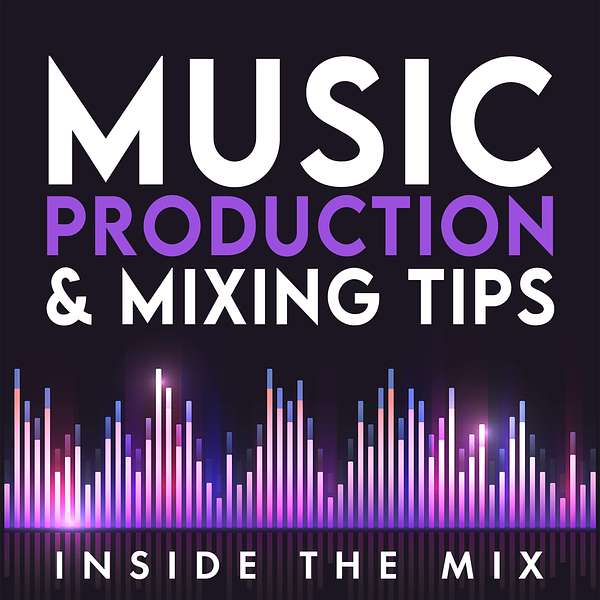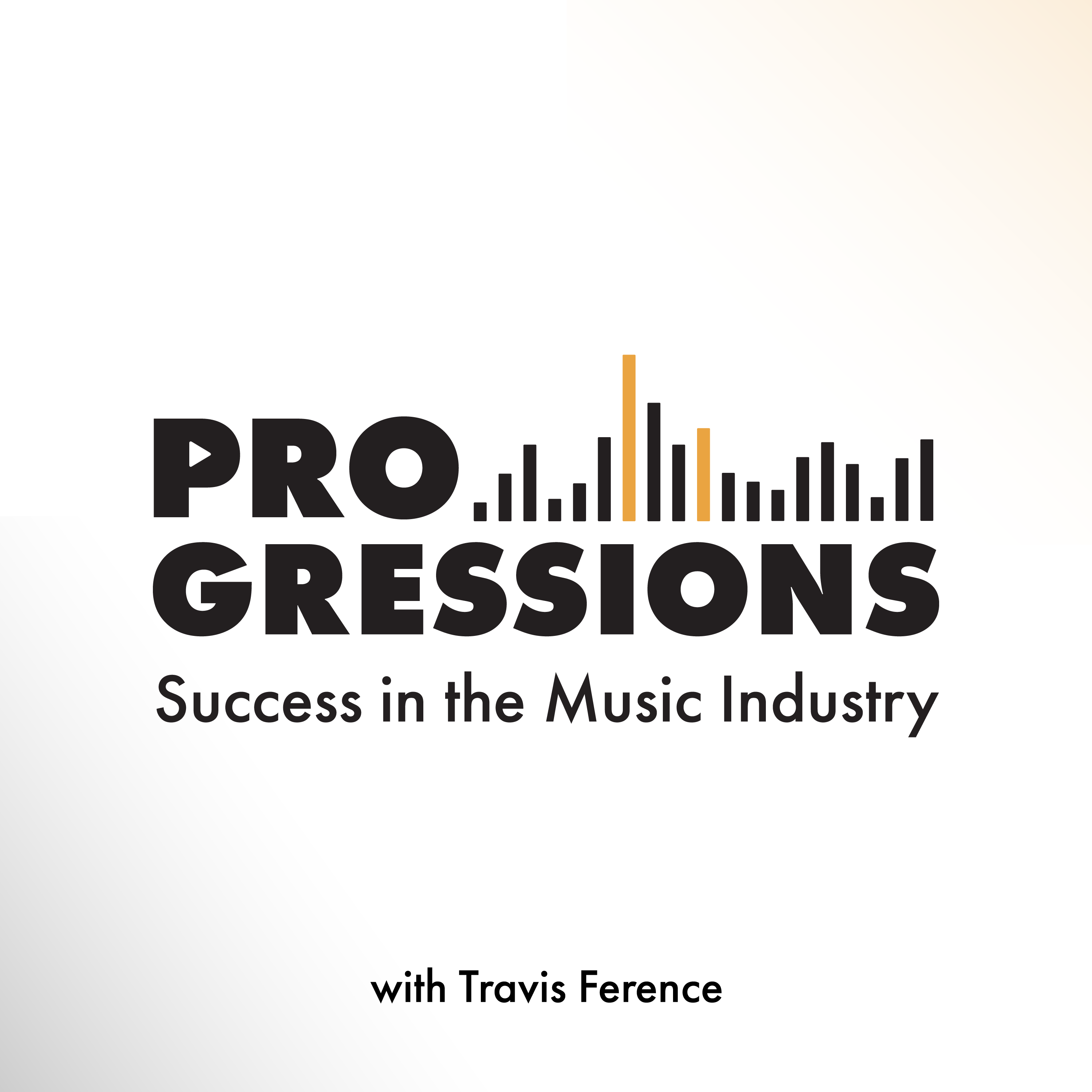
Music Production and Mixing Tips for Beginner Producers | Inside The Mix
How do you make your mixes sound professional as a beginner? What’s the real difference between mixing and mastering? And do you actually need expensive gear to produce great music at home?
Inside The Mix is the podcast for beginner and early-career music producers, as well as hobbyist musicians, who want clear, practical answers to the most common questions in music production and mixing music. Each episode breaks down real-world techniques used in audio engineering, helping you improve clarity, balance, and confidence in your mixes — even in a home studio.
You’ll learn how to:
- Make your mixes sound professional as a beginner without overcomplicating your workflow
- Fix common problems like muddy mixes, weak low-end, and poor translation
- Understand the difference between mixing and mastering — and when you really need each
- Build a reliable production process using tools you already own
Hosted by Marc Matthews, Inside The Mix goes beyond generic beginner tutorials. Expect insightful interviews with industry-leading engineers and producers, listener-focused round-table critiques, and practical coaching designed to accelerate your progress. Past guests include Grammy Award-winning professionals such as Dom Morley (Adele) and Mike Exeter (Black Sabbath).
👉 Start with audience favourite:
Episode #175 – What’s the Secret to Mixing Without Muddiness? Achieving Clarity and Dynamics in a Mix
Subscribe, follow, and explore Inside The Mix to grow from beginner to confident producer — one mix at a time.
Music Production and Mixing Tips for Beginner Producers | Inside The Mix
#36: How to Use a Synth and Make a Basic Pad Sound
Watch the full tutorial video on my YouTube channel, click here: https://youtube.com/playlist?list=PLKYajovwzov15GcPzIInQbZmB0zQlTY5E
Want to join a community of artists and music enthusiasts and gain access to exclusive Inside The Mix Podcast content? Join the podcast Facebook community group here: Inside The Mix Podcast Community
Are you thinking about starting a podcast or need help growing your audience? Check out the Podcast Business School: https://www.podcastingbusiness.school/a/2147490930/Hw6eEPeg
Start recording your own podcast today using Riverside FM here: Riverside FM
Ways to connect with Marc:
Book your FREE Music Breakthrough Strategy Call
Radio-ready mixes start here - get the FREE weekly tips
Follow Marc's Socials:
Instagram | YouTube | Synth Music Mastering
Thanks for listening!!
Try Riverside for FREE
You're listening to the inside the mix podcast with your host, Mark Matthews. Hello and welcome to the inside the mix podcast. I'm Mark Matthews, your host, musician producer, and mix and mastering engineer. You've come to the right place. If you want to know more about your favorite symp music, artists, music engineering, and production songwriting, and the music industry. I've been writing, producing, mixing, and mastering music for over 15 years. And I wanna share what I've learned with you. Hey folks, welcome to another inside the. Music production tutorial video. So in this short music production tutorial, I'm gonna go through the process of creating or sound designing a basic synth pad. Now for this, I'm gonna be using pigments. So that's Teria pigments. Um, the processes that are use in this video, you can apply in pretty much any VST soft synth, to be honest. Um, but yeah, as I say, I'm gonna be using pigments for this one. So let's dive. Okay. So to start with what I have is, uh, I'm using logic pro. So I did a bit of digging around. I found this harp sample and it's at 70 BPM and this is in the key of a minor. So this is what the harp sample sounds like. Okay. Um, I do like the key of a minor. I've got a few tracks that I've released an, a minor check out. You and I, uh, I released it earlier this year, so 2022. Um, so that's the harp sample that I've got. And then what I've done is I've just put down some really basic chords using a, um, using Teria. And they sound like this. Once again, this is in the QA. Okay. So what I've got here is I'm using pigments, as I say. And what I've done is I've reset it to the new preset. So is just essentially a basic wave form. So to create a Synthes. Generally what I'll do is, um, I'll lay down some chords as I've done there. And what I'll do is start playing around with some wave forms. So once again, you can do the 10 90 synthesizer. So I'm going to look for, uh, let's look for a sore tooth. I do like a sore tooth, a bit of subtracted synthesis. So let's go with, try the ultra saw and see how that sounds sound. Okay. So it's kind of getting to the sound that we want. So what I'll then do is for. I'll then move over to the filter section and use a cutoff and then get rid of some of those high frequencies. Okay, you can, well, I say, see if you're watching this, uh, you can hear it start to take ship. So what I'll then do is I'll probably add a bit of resonance to just that cutoff frequency. So sounded quite nice. Then what I'll do is I'll go down to the, um, the. For this particular one. So this is the attack decay, sustain and release. So I'll probably just lengthen the attack slightly. So it's just you, haven't got that initial transient hit. Okay. And this lengthen that a bit. So I'm gonna add a bit, bit more in terms of the beauty with the envelope is, and if you're doing. You've got the BPM set. You can time the attack in decay and sustain and release to the track so you can play. So the initial cord hit will end before the next one comes in. So that's a sort of nice start. And then what I'll do is I'll go over and add another wave form to this. Actually let's try. So I'm using pigments in this instance. So I'm actually gonna add a sample to this. This is what the grand piano sounds like quite. Okay. So it's getting there. Okay. So I've actually decided I don't wanna use the grand piano. So I'm gonna go back to engine two in, in pigments and look at the wave table. In fact, I'm gonna look at the analog, um, wave forms available to me. So let's see what we have here. So I've got the basics. So you've got a sine wave. You've got a square wave saw tooth. And, um, let's see what we have. Try sign, wave rounds it out bit. Not so not too sure on that one. So let's go wave table. Let's go back to the wave table. I think these ones are a bit, they have more Sonic richness to them. So basic wave forms. Let's go with synthesizers and I wanna find a nice, I do like a square wave, so let's find a decent square wave. Okay. So in this instance, what I've actually opted for is sort of a low-fi sign. Sort of triangle wave and it adds a bit more sort of roundness and bottom into this way. So. Okay. So another little trick I like to do, um, when I'm creating these senses, I've got the fine tune module. So not course fine tune on this one. And I like to get an LFO and I will start to oscillate the, the fine tuning of this one here. So I've got it synced, um, to the, to the BPM of the track. And I've got it set to one eighth and it's only a really subtle oscillation, but it kind of adds, uh, like an. Saturate, saturation's probably the wrong word, but an analog sort of character worth it with that, with that fluctuation. So you can sort of hear it. If I bring down the rate, you can hear it fluctuating slightly with that fine tuning. So I set it to one eight or one 16th. The. Okay, let's take a quick break from this episode so that I can tell you about free resource that I made for you. It's a PDF checklist that describes what you need to do to properly prepare a mix for mastering. So you've done the hard work and you love your mix yet. Suitably preparing a mix for mastering is often overlooked by musicians resulting in delayed sessions, excessive, back and forth conversation and frustration on both parts. I want to help fix that. So if you want this free resource, just go to www, do. Synth music, mastering.com. As this checklist will help and guide you to make the mastering process as smooth, transparent, and exciting as possible. So again, the URL is www dot synth music, mastering.com for this free preparing a mix for mastering checklist. Let's get back to the episode. So next, what I look at here, I are some effects, so that's just a really basic pad now. So let's go to some effects. So I'll probably, well, what I will do is add some reverb. So I'm using the reverb, built into pigments for this one. So let's big. It's. Okay. So I'll what I also like to like bring down the re. Okay. So what I'm now gonna add, I'm gonna add the delay back in actually, and I found this reflection, which sounds quite nice. It's like a ping pong sort of effect, kind of like a church Morgan sort of sound. Okay. So to finish this off, what I've decided to do now is I'm using another LFO, so low frequency oscillator, and I am using that to modulate or rather change the cutoff frequency. So I've got it synced. And this time I'm using two to one on this one. So. What this does is what you're here now for the. Back a bit. We go. So that's just a really, really basic run through of how I would start designing a pad. There are a lot more, there is a lot more that you can do to this in order to create a pad sound. So essentially what I've done is just to recap, I've used two different wave form. Um, I've added some frequency modulation using, uh, an LFO. Uh, so I've got the cut cut off being modulated. I've got the fine tuning being modulated as well, and then obviously fine tuning the attack or the decay sustain and release on the envelope. So there we go. Um, give it a go, um, some things to think about in your own productions, if you are designing from scratch or you've never done it before, as I say, these tips can be used and these techniques can be used in other soft, um, synthesizer vs. So, uh, if you've enjoyed this video, please do subscribe. If you are watching this on YouTube, if you are listening to this on the inside the mix podcast, please do also follow and subscribe to the podcast and look out for the next episode. Thank you for listening to our show. If you like what you're hearing, make sure to rate our show on apple podcasts.
Podcasts we love
Check out these other fine podcasts recommended by us, not an algorithm.

Progressions: Success in the Music Industry
Travis Ference
Let's Talk Synth... Seriously!!
UAPretrosynth
The Savvy Producer | Productivity and Efficiency in Music Production
Marsden Mastering
Your Morning Coffee Podcast
Jay Gilbert & Mike Etchart
Recording Studio Rockstars
Lij Shaw
Master Your Mix Podcast
Mike Indovina
